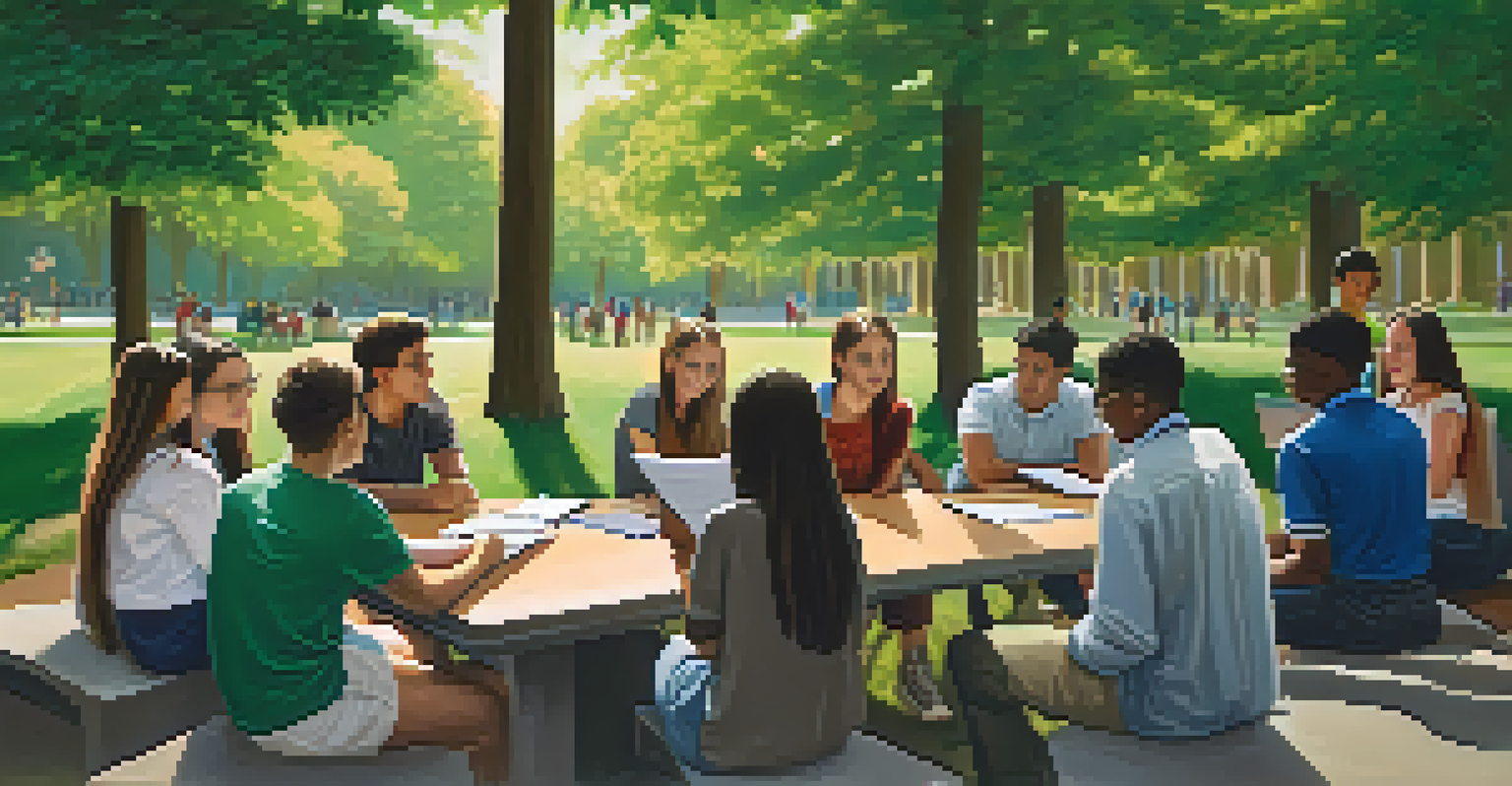Personalized Learning Through Community-Based Education Initiatives

Understanding Personalized Learning in Education
Personalized learning tailors education to meet individual needs. This approach recognizes that every learner is unique, with their own strengths, challenges, and interests. Rather than a one-size-fits-all model, personalized learning adapts instructional methods and resources to fit each student's pace and style.
Education is the most powerful weapon which you can use to change the world.
For example, a student struggling with math might receive additional support through interactive tools, while another excels and moves ahead with advanced topics. This flexibility not only boosts engagement but also helps students take ownership of their learning journey. In essence, personalized learning empowers students to become active participants in their education.
By leveraging technology and various teaching strategies, educators can create customized learning experiences. This ensures that every student, regardless of their background, has the opportunity to succeed and thrive in their educational environment.
The Role of Community in Education
Communities play a crucial role in shaping educational experiences. They provide resources and support systems that enrich learning opportunities beyond the classroom. Local organizations, businesses, and volunteers can collaborate with schools to create a dynamic educational ecosystem.

For instance, mentoring programs can connect students with professionals in their fields of interest, offering real-world insights and encouragement. By fostering these community connections, students gain access to a wealth of knowledge and experience that enhances their learning.
Personalized Learning Empowers Students
Personalized learning tailors education to meet individual needs, allowing students to take ownership of their educational journey.
Moreover, community involvement can help bridge gaps that traditional education might miss. By understanding local needs and leveraging community assets, educational initiatives can be more relevant and impactful for students.
How Community-Based Initiatives Foster Personalized Learning
Community-based education initiatives are designed to cater to the diverse needs of students. These programs often emphasize collaboration and hands-on learning, allowing students to engage with their surroundings in meaningful ways. This approach not only personalizes the learning experience but also makes education more relevant to students' lives.
The best way to predict the future is to create it.
Take, for example, a community garden project that involves students in planting, maintaining, and harvesting vegetables. This initiative teaches not only biology and ecology but also fosters teamwork and responsibility. By immersing students in real-world applications, community-based programs deepen their understanding and retention of knowledge.
Ultimately, these initiatives create a supportive learning environment where students can explore their interests. With guidance from community members, learners can pursue projects that resonate with them, enhancing their educational experience.
Examples of Successful Community-Based Education Programs
Numerous community-based programs have showcased the effectiveness of personalized learning. One notable example is the 'Big Brothers Big Sisters' program, where mentors provide guidance and support tailored to each student's needs. This personalized approach helps students build confidence and set achievable goals.
Another example can be found in various arts programs that partner with local schools. These initiatives offer students the chance to explore creative outlets and develop skills that may not be emphasized in traditional curricula. By engaging with local artists, students often discover new passions and talents.
Community Enhances Educational Experiences
Community involvement provides essential resources and support systems that enrich learning opportunities beyond the classroom.
These successful programs highlight the potential of community involvement in education. They demonstrate how personalized learning can thrive when supported by a network of committed individuals and organizations.
Barriers to Implementing Community-Based Education
While community-based education presents numerous benefits, there are challenges to implementation. One significant barrier is the lack of funding, which can limit resources and opportunities for collaboration. Schools often struggle to secure the necessary financial support to launch or sustain such initiatives.
Additionally, there may be logistical issues, such as coordinating schedules between schools and community organizations. This can create hurdles in establishing effective partnerships that benefit students. Without clear communication and planning, these valuable connections might not flourish.
Lastly, resistance to change can pose a challenge. Some educators or community members may be hesitant to adopt new methods or ideas, fearing the unknown. Overcoming these barriers requires open dialogue and a willingness to embrace innovative approaches to education.
Measuring the Impact of Community-Based Learning
Evaluating the effectiveness of community-based education initiatives is essential for their growth and sustainability. By measuring student outcomes, educators can assess whether personalized learning strategies are making a difference. Metrics such as academic performance, student engagement, and social-emotional development can provide valuable insights.
For example, tracking students' progress in specific subjects before and after participating in a community initiative can reveal the program's impact. Additionally, feedback from students, parents, and community partners can help identify strengths and areas for improvement.
Measuring Impact Validates Programs
Evaluating community-based education initiatives helps assess their effectiveness and informs future efforts to enhance student learning.
Ultimately, measuring impact not only helps validate community programs but also informs future efforts. By understanding what works, educators and community leaders can refine their approaches to better serve students and enhance their learning experiences.
The Future of Personalized Learning Through Community Collaboration
As we look toward the future, the potential for personalized learning through community collaboration is promising. With advancements in technology and a growing awareness of diverse educational needs, there are more opportunities than ever for community-based initiatives. Schools and local organizations can work together to create innovative solutions tailored to their students' unique challenges.
For instance, the use of online platforms can facilitate connections between students and community mentors, expanding the reach of personalized learning beyond geographical limitations. This allows for a more extensive network of support and resources to enhance student engagement.

In conclusion, the future of education lies in embracing community involvement. By fostering strong partnerships and prioritizing personalized learning, we can create a more inclusive and effective educational landscape for all students.